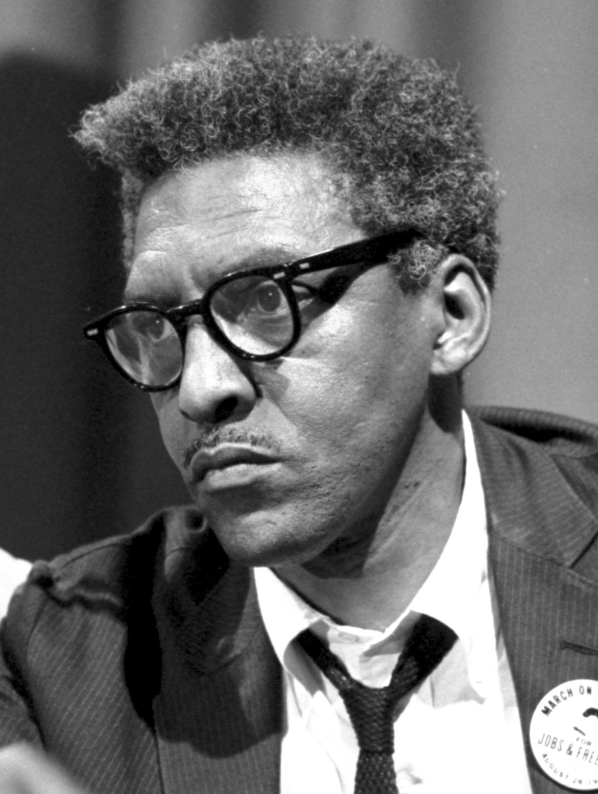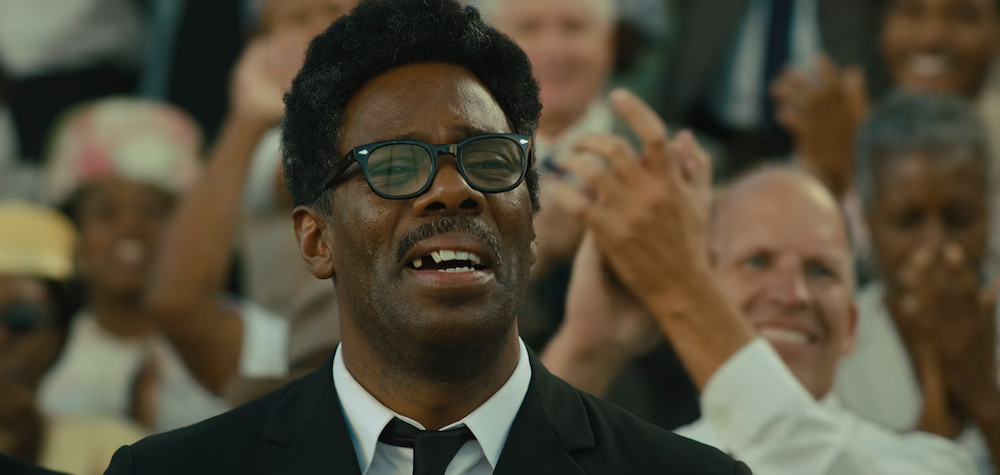Netflix’s ‘Rustin’ explores the life and work (or at least a part of it) of Bayard Rustin, a dedicated civil rights advocate who spent his entire life fighting for equality and justice. The central event of the story is the inception and organization of the 1963 March on Washington, the largest peaceful protest in the history of the county. Through it, we get to know about Rustin’s tireless pursuit for equal rights, as well the openness with which he lived, despite the threats he had to face along the way. Rustin didn’t shy away from wearing his scars as his badges of honor, one of the most visible of which is his missing tooth.
Bayard Rustin’s Missing Tooth is a Testament to His Passive Resistance
Early in the film, to stop an altercation at a party, Bayard Rustin offers himself to an angry young man, speaking about his own non-violence policy and how, even though he is not ready to hit someone, he is prepared to take a hit himself. He asks the said person to hit him on the other side because his teeth on one side are broken, courtesy of a white policeman in 1942.

Halfway into the film, we receive a flashback to that event in 1942, where Rustin protests the segregation of Black passengers in buses and is attacked by a policeman because of it. This event happened in real life and is the real reason why the real-life Bayard Rustin had broken and crooked teeth on one side. He’d been traveling from Louisville, Kentucky, to Nashville, Tennessee, on a bus and refused to sit at the back, as dictated under the Jim Crow laws at the time. When the cops attacked him, he didn’t resist and took the hits.
In the movie, Rustin says that if he doesn’t resist the racial law, the child sitting on the adjacent seat will never know the injustice that’s taking place there. This scene resonates with the real-life incident where Rustin had said: “If I sit in the back, I am depriving that child [a young white boy] of the knowledge that there is injustice here, which I believe is his right to know.”
Rustin was brutally beaten for his protest and lost his tooth while also suffering damage to other teeth. However, reportedly, his act of resistance gained him sympathy and impressed the people around him, and some white passengers backed him, which resulted in his release from jail by the local district attorney. More than a decade later, in 1955, Rosa Parks ignited the streak of boycotts in Montgomery, which led to the declaration that segregation laws in buses were unconstitutional.
Rustin continued this streak throughout his life, resisting inequality and injustice but never resorting to violence to make his point. He fought back, but he never picked arms to do that. He is said to have passed this pacifism and non-violence to Martin Luther King Jr. and helped him see how passive resistance was necessary to push their revolution in the right direction. He knew he’d have to face violence for his resistance, but that didn’t stop him from keeping up with his protests, which eventually culminated in him organizing and executing the biggest peaceful protest the country had ever seen.
Read More: Rustin: Is Tom Based on a Real Person?


You must be logged in to post a comment.